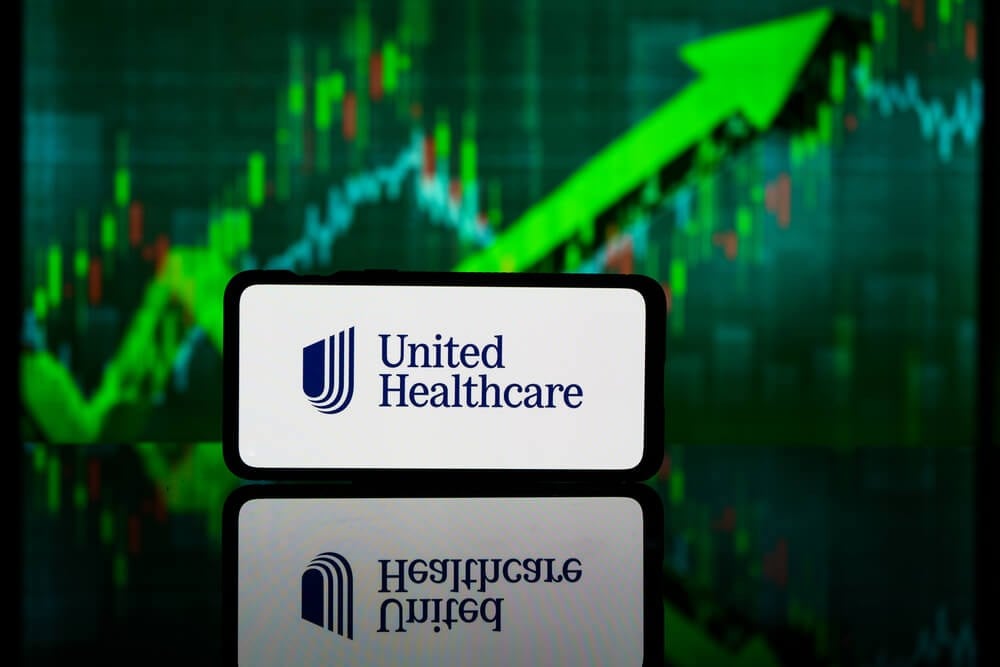
The United States Economy is beginning to undergo a significant pivot, where specific industries will be rewarded with investment inflows over others. As the FED attempts to combat rampant inflation rates in the nation, rising interest rates are having the subsequent effect of slowing down the prospects for businesses inherently dependent on the business cycle.
Conversely, other firms operating in what is considered to be the 'defensive' sectors are characterized as spaces in the economy that can reliably perform despite where the business cycle is at a given point in time.
Understanding these massive capital rotations can lead investors into winning sectors, enabling them to pick better the winning stocks that are set to outperform other names in the sector.
Today, investors have such a chance as UnitedHealth Group (NYSE: UNH) reports its second-quarter 2023 earnings results, pushing the stock higher by as much as 8.1%. This initial reaction is the foundation of what can turn out to be a considerable bull run in the stock.
Favoritism Wins
Spreading the sector into peers that reasonably compare to UnitedHealth, investors can begin to understand who the winner will be in this pending capital rotation toward defensive stocks. Taking large capitalization stocks in the peer group, considering names like Humana (NYSE: HUM) and Elevance Health (NYSE: ELV), it will become evident that the stock performance over the past twelve months has been near lock-step between the three giants.
There are other, more powerful, tools that investors can begin to use to differentiate these names further.
Figuring out where markets reward higher 'perceived' quality and valuations is paramount. Spotting these preferences can lead investors into the right pockets of upside potential; this investigation can begin by looking at the relative forward price-to-earnings ratios across the group.
A forward P/E, as compared to the conventional P/E, takes into account the expected next twelve months' earnings as a value driver. Using this logic, investors can begin to understand which stock carries the more valuable future outlooks, UnitedHealth.
Competitors like Humana and Elevance trade at 13.2x and 11.3x forward P/Es, respectively, which are significantly inferior to UnitedHealth. A 16.0x multiple will place UnitedHealth head and shoulders above these names, implying that markets are perceiving a higher value regarding the future of the company's financials.
The question now becomes: What is happening to the underlying trends within UnitedHealth's financials? Well, the newly issued quarterly results may hold the key.
Fundamental and Technical Traction
Considering that UnitedHealth stock peaked at $558 to finish the year 2022, today's prices will pose a significant inflection point. UnitedHealth analyst ratings are pointing to a consensus 21.2% upside potential from today's prices, an attractive ceiling by any measure.
Despite a 14% decline from the peak of 2022, analysts - and markets - retain relatively bullish sentiment regarding this stock, which may have to do with this critical technical price. Wall Street's definition of a 'Bear Market' is a 20% retracement from all-time or recent highs, a marker that UnitedHealth never reached.
Taking the 2022 high of $558 per share, this 'Bear Marker' would fall right around the $446 mark. Even though UnitedHealth got close to hitting an official 'Bear Market,' it never quite touched this marker, fueling positive sentiment and reiterating the thesis that investors are beginning to favor defensive names.
Within the earnings press release, UnitedHealth posted 16% annual revenue growth, significantly overcoming the challenging inflationary environments acting as headwinds. Moreover, shareholders enjoyed a formidable 10.2% growth in earnings per share, which fell behind due to rising operating costs ratios from 14.6% to 14.9%.
Despite what seems to be a temporary rise in costs within Optum, a secondary operator owned by UnitedHealthcare, management has been caught buying back shares during the year.
Ten million shares were retired off the open market in the past twelve months, yet another sign of potential upside, this time from insiders themselves. With $11 billion in cash flow from operations generated, investors better be thinking about further buybacks to come in the future, right along with a 1.6% dividend yield.
Now investors have macroeconomic reasons (as portrayed by the capital rotation into defensive stock) and microeconomic reasons to buy the stock potentially. Markets are favoring UnitedHealth as a winner within a seemingly winning sector, a preference spotted by higher perceived valuations around the company's future earnings.
Insiders believe there is still room to move up, as management keeps buying back shares, and analysts may now be faced with the possibility of raising the stock's targets.













